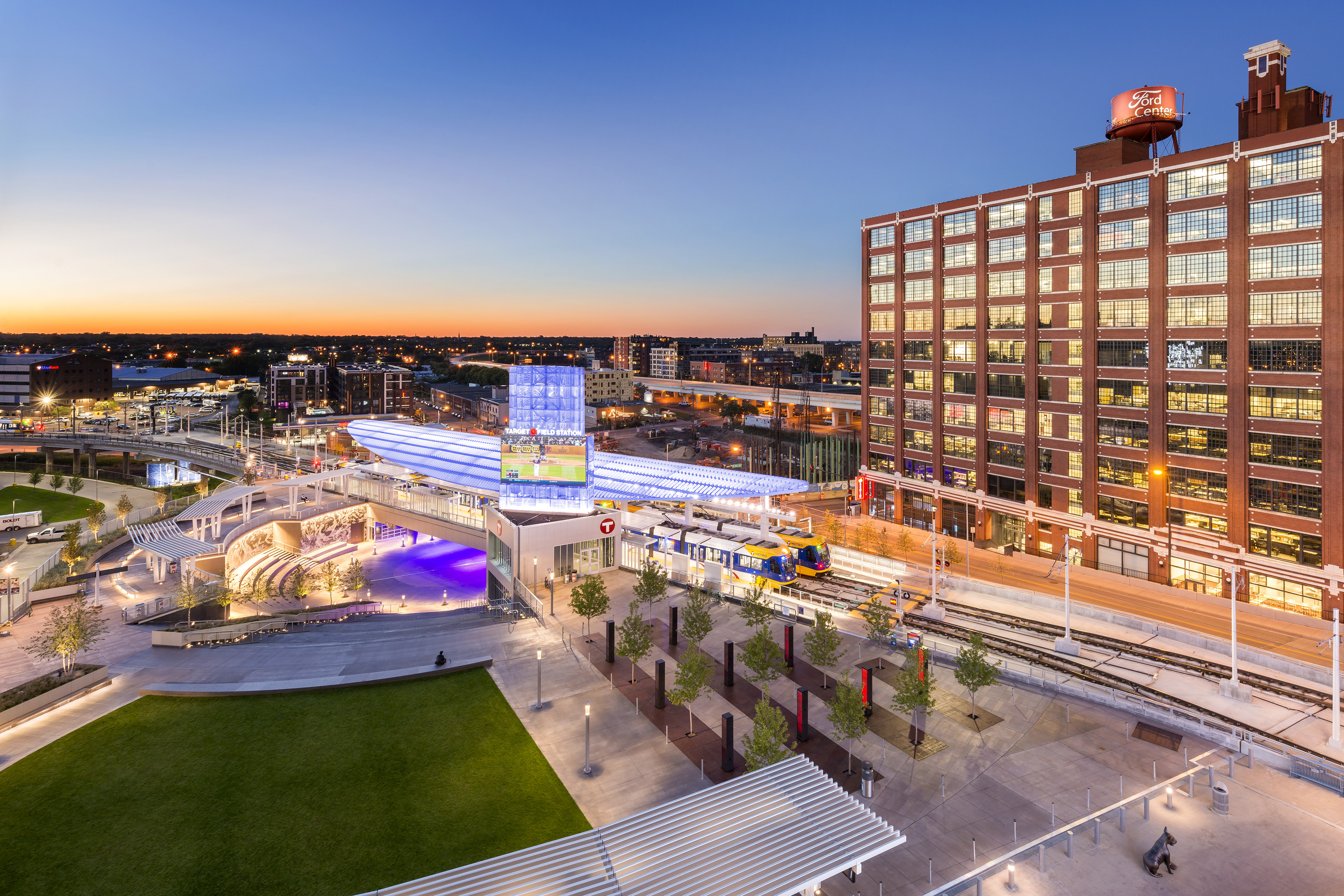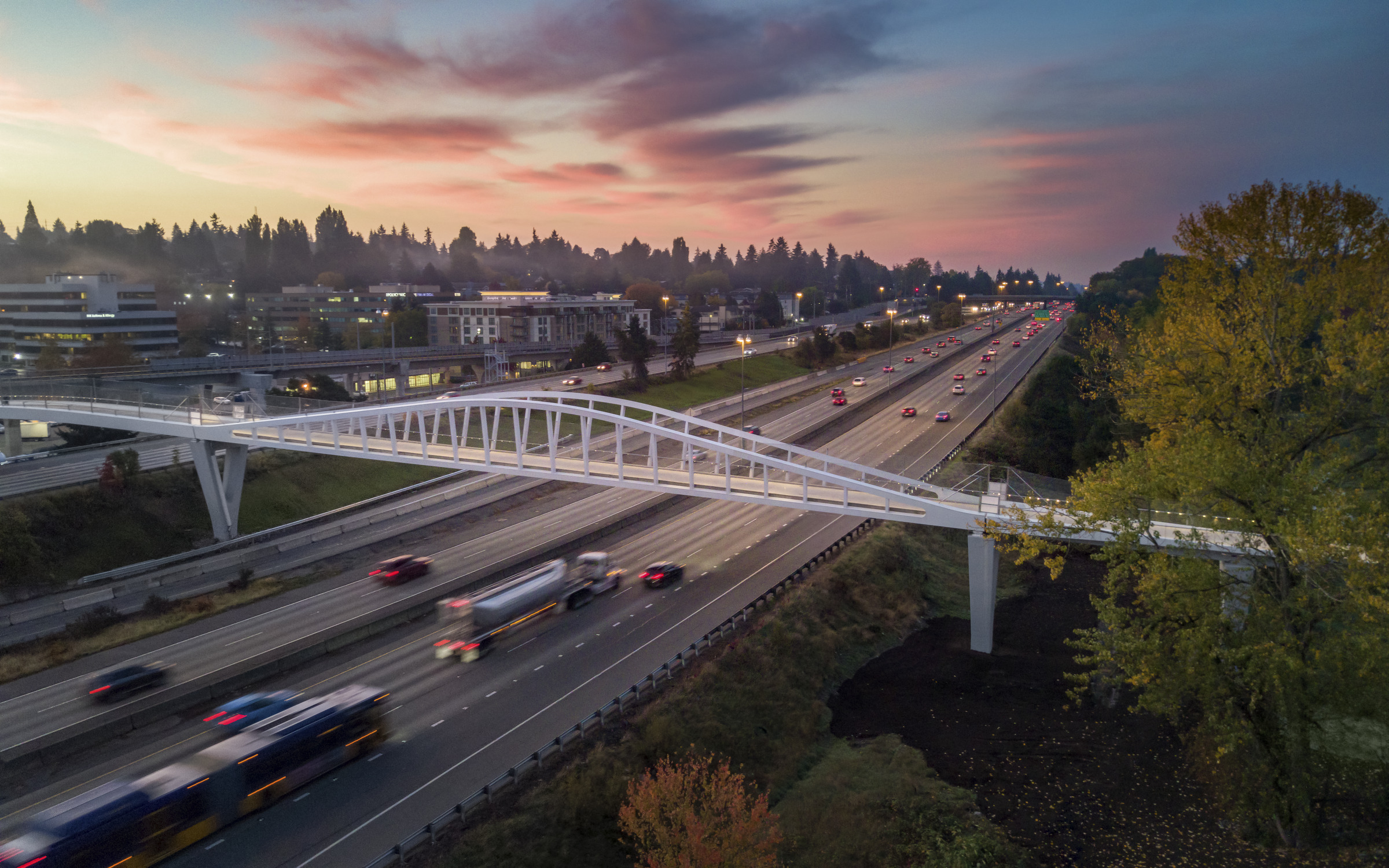At times, transit and infrastructure can go far beyond their primary use of moving people from point A to point B. All across the country, city and state governments are investing billions on projects aimed to reconnect and re-energize communities that earlier infrastructure campaigns left compromised—or worse, simply bulldozed into the ground.
Perkins Eastman is working with transportation agencies and private developers from coast to coast to design some of these solutions. These projects are opportunities to move people figuratively as well as literally; they should anchor a community rather than merely offering a portal to another place.
At Minneapolis’ Target Field Station, for example, the design team proposed adding a lawn and amphitheater to the station. “We wanted to make the transit experience theatrical,” former Perkins Eastman principal Cavaluzzi said. So much so that when the musician Prince died in 2016, hundreds of people spontaneously gathered in the space as his movie “Purple Rain” streamed on the big screen. “It was totally gratifying for us to see that something we created became this beloved ‘town square’ and meeting place for the community.”

A great lawn and amphitheater form a pleasing link between Target Field and its transit station in Minneapolis.
All Target Field Station and Lake Street Station photographs © Morgan Sheff
This approach takes on more significance in areas that were torn apart when the Federal-Aid Highway Act of 1956 brought 41,000 miles of asphalt across the country, according to an NBC report, displacing over 475,000 households and one million people in the process. Here’s a look at some projects that seek to redress those divisions.




